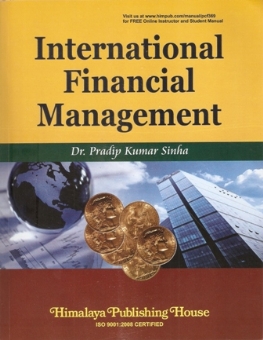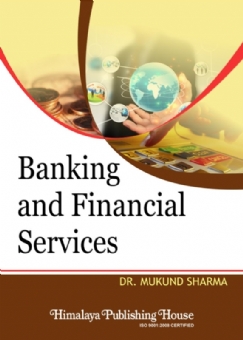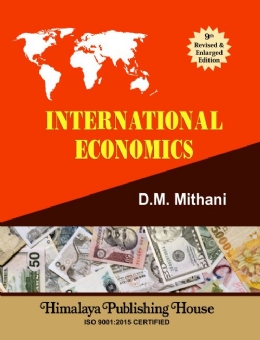The topic in the text are covered from the perspective of a person who wishes to learn about the financial management of an internationally oriented business. However, it is important that managers also understand international financial level development on an overall macroeconomic level. Such an understanding enables managers to anticipate economic changes and adjust to what they expect to occur. Of late the international financial developments that are happening are nothing short of spectacular. For example, new markets and instruments are emerging at frantic pace as a response to exchange rates that at times been so volatile they have grabbed the headlines in the financial news. Great fortunes have been made and lost In foreign exchange.
An introduction to the structure of the markets and the form in which currencies are exchanged is essential background to the study of international financial management. And is covered in Chapter 1.
Chapter 2, begins by describing why the balance of payment account can be considered as a listing of the reasons a currency is being supplied and demanded. The chapter explains that all positive or credit items listed in the account give rise to a demand for the country’s currency and all negative or debit items give rise to a supply of the currency. After explaining the basic principle of balance of payment accounting each major entry in the account is examined to provide an understanding of what factors can make each entry increase or decrease and thereby change the exchange rate. The chapter also discusses and the discusses India’s balance is payments on current account and on capital account.
Chapter 3 deals with the history of the international financial system that eventually brought about the collapse of each.
Chapter 4 explain the nature of bank-note market and the bank-draft market, the former involving the paper currency and the latter involving cheques. The chapter allows the option of choosing direct or indirect exchange between currencies and to comput all exchange rates from exchange rates via US dollar route. The forward market plays an important role in the avoidance of foreign exchange risk (hedging) and the selective risk taking (speculating).
Chapter 5 discusses about currency derivatives which as their name suggests. Derive their value from underlying values of currencies, the two derivatives are currency futures and currency option. Currency futures are similar to forward exchange contracts that help fix exchange rate for future transactions. However, currency futures trade of formal exchange, have only limited number of value dates, come in particular contact size and can be sold back to the exchange. Different types of currency option allows byres prescribed, along with the factors which affect market prices, or premiums, on option The advantage of using option versus futures and forwards when hedging and speculating are also covered in the Chapter. The chapter also discusses Swap market in India.
Chapter 6 begins with a discussion of the criterion for making short-term covered instruments when there are costs of transacting in the foregone markets since short-term investments are an important aspect of cash management, the chapter looks also at short-term borrowing decisions and a number of other aspects of the management of working capital in a multinational context. The chapter also deals with procedure for issue of GDR/ADRs in Indian context.
Chapter 7 begins by explaining the law of one price as it applies to an individual commodity such as gold or wheat. In this context. The law of one price states that the dollar cost of each commodity should be equal everywhere. It also explains the extension of the law of one price from an individual commodity to goods and service in general. The extension gives rise to the PPP principle, which states that the ratio of bundle of goods and services in United Services to the pound price of the same bundle in Britain should be the exchange rate of the dollar for the differences between inflation rates. This condition is explained in this chapter along with the way the foreign exchange market can be used to eliminate exchange rate risk and exposure when engaging in interest arbitrage.
Chapter 8 takes us directly to the International Portfolio Management and Foreign exchange exposure. It also explains foreign exchange risk; a matter which is often confused with exposure Exchange rate risk is shown to relate to the variability of the domestic-currency value of assets, liabilities and income, whereas exposure is the amount at risk. This makes risk and exposure conceptually and even dimensionally different. The chapter also deals with accounting and real exposure, the effect of exchange rates on sales and exposure and is contrasted and compared using the building blocks of pay-off profiles.
Chapter 9 looks at the structure, and insternational trade. No course on international finance is complete without an explanation of the nature and role of letter of credit, bill of exchange, payment drafts, bolls of lading, way bills and other document. Several forms of export financing are explained, including sort-term credit involving delayed payment dates on bills of exchange and medium-term credit involving forfaiting.
Chapter 10 is on Regulatory Framework of International Finance and contains historical perspective of Export-Import policy, objective of the EXIM Policy 2009-14, trade regulations governing exports and imports.
Chapter 11, deals with financial management of multinational firm, starts with capital budgeting framework that management can employ when deciding whether or not to make foreign direct investment. There extra problems include the presence of exchange-rate and currency risks, the need to consider taxes abroad as well as at home, the issue of which country’s cost of capital to use as a discount rate, the problem posed by restrictions on repatriating income and the frequent need to account for subsidized financing. The chapter also deals with advantages of Centralized Cash Management System and other practical issues in Cash Management. The chapter also offers a general review of taxation in the international context topics as value added tax, tax reducing organization structures and withholding tax. The chapter concludes by reference to the Control Strategies.
Chapter 12 focuses on International Acquisitions with reference to MNCs use of international acquisition as a form of multinational restructuring and how MNCs conduct valuation of design of foreign target firms?
Chapter 13 deals with the mechanics of interest rate swaps and the volatility of interest rate swaps and currency swaps.
The concluding Chapter 14 discusses on Interest rates. Markets deal with Fundamental issues concerned with the way interest rate are measured and analyses; the way interest rates are measured and analyzed; the zero rates, par yield and yield curves, discuss bond pricing and outline a procedure commonly used by a derivatives trading deal to calculate zero coupon treasury interest rates, the forward rates and forward rate agreements and review different theories of the term structure of interest rates etc.
Contents :
1. Introduction to International Financial Management
2. International Flow of funds and Balance of Payments
3. International Monetary System
4. Foreign Exchange Market
5. Currency Futures and option Markets
6. The International Financial Markets and Cash Management
7. Economic Theories of Exchange Rate and The Purchasing Power Principle
8. International Portfolio Management With Exposure Management
9. International Trade Finance
10. Regulatory Framework of International Finance
11. Financial Management of Multinational Firm
12. International Acquisitions
13. Interest Rate swaps and currency Swaps
14. Interest Rate Markets







